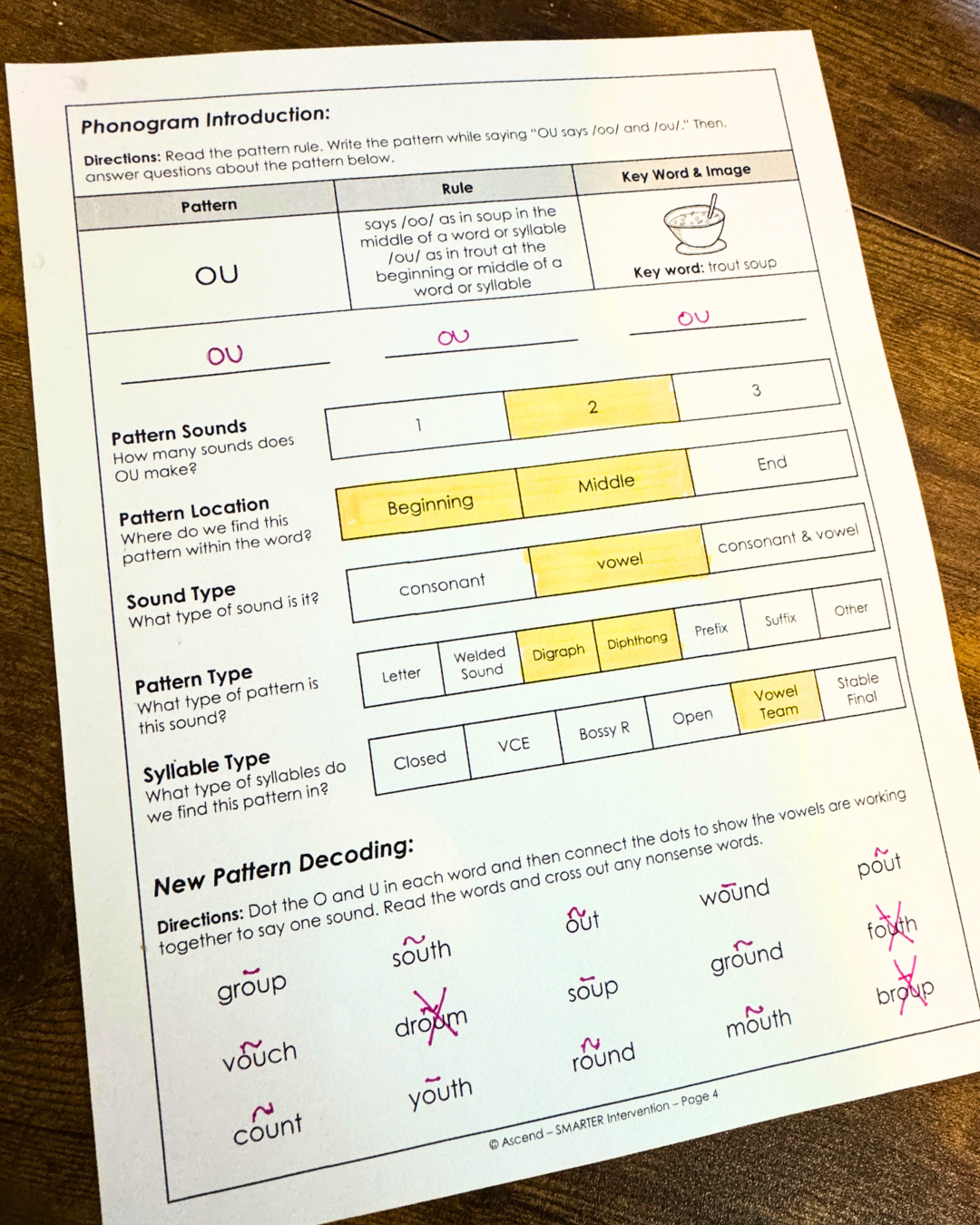How to Teach the OU Spelling Rule
Why it Matters
Some vowel teams are tricky because they can make more than one sound, and OU is one of them. While students might easily remember that OU says /ow/, they often get tripped up when it also says /oo/ in other words.
If we don’t teach this clearly and explicitly, students may end up guessing (and often guessing wrong). But when we show them the pattern and give them meaningful practice, they begin to build spelling confidence, even with those unpredictable teams.
What is the OU Rule?
The vowel team OU can make two different sounds:
/ow/ like in trout
/oo/ like in soup
To help students remember both, we use the phrase:
“Trout Soup” 🐟🥣
Because nothing says “sticky memory” like a bowl of fish soup!
How we teach the OU Spelling Pattern
1. Teach the Sound in Isolation
We start by saying and listening to words with the OU team. Students practice hearing:
OU = /ow/ like shout, mouse, cloud
OU = /oo/ like group, soup, route
We teach both sounds together from the beginning, so students aren’t surprised later.
2. Connect to Syllable Structure and Spelling Options
We remind students that OU is a vowel team syllable and one of several ways to spell each sound:
Other ways to spell /ow/: ow (e.g., cow)
Other ways to spell /oo/: oo (e.g., moon), u_e (e.g., flute)
This helps them start recognizing that there are multiple correct spellings for similar sounds, and builds flexibility.
3. Practice at the Word Level (with Homophones & Vocabulary)
We build word lists with examples of both sounds and point out:
Homophones and look-alike words
Word meaning and usage (e.g., route can be pronounced two ways!)
We want students to think about what the word means, not just how it sounds. That builds both vocabulary and visual memory.
4. Practice at the Sentence Level
We use our three-part sentence routine:
Sentence Building – Choose 2 OU words and write a creative sentence
Sentence Combining – Merge two simple sentences using OU words
Sentence Dictation – Hear a sentence and spell it with accurate OU patterns, capitalization, and punctuation
This helps them apply spelling in context, not just in isolation.
5. Extend to Paragraph Writing (Grades 2+)
Older students choose a handful of OU words and draft a short paragraph. This pushes them to apply their spelling knowledge in meaningful writing, while reinforcing the pattern.
What if students get stuck?
Some students:
Forget which sound OU is making
Confuse OU with OW, OO, or U_E
Misspell a word because it “sounds right” but looks wrong
We support them by:
Using the “Trout Soup” anchor phrase and visual
Practicing pattern contrasts (e.g., shout vs. show)
Giving plenty of opportunities to read and write the words in connected text
And yes, we tell them that spellcheck is a helpful friend, but we also want to build spelling intuition through repetition and meaning-based practice.
Looking to teach ou in your lessons?
Depending on where you are in your teaching journey, here are a few next steps:
Just getting started?
Grab our Free Phonics Rules Posters! They’re perfect for hanging in your classroom or using as a quick reference when introducing a new pattern (not only will you get the ou pattern, but tons of other patterns we teach too!).
Download Phonics Rules Posters » Get them here!
Want to see how we teach all the rules?
Check out our Spotlight PD: The Reading Rules We Teach (and Why They Matter!)
This 1-hour on-demand training provides you with everything you need to help you confidently teach the rules that actually move the needle, without getting lost in all the complexity.
You’ll get a clear, research-backed framework that shows which reading rules to focus on, why they matter for the brain, and how to teach them at each level—sound, syllable, word, sentence, paragraph, and passage.





